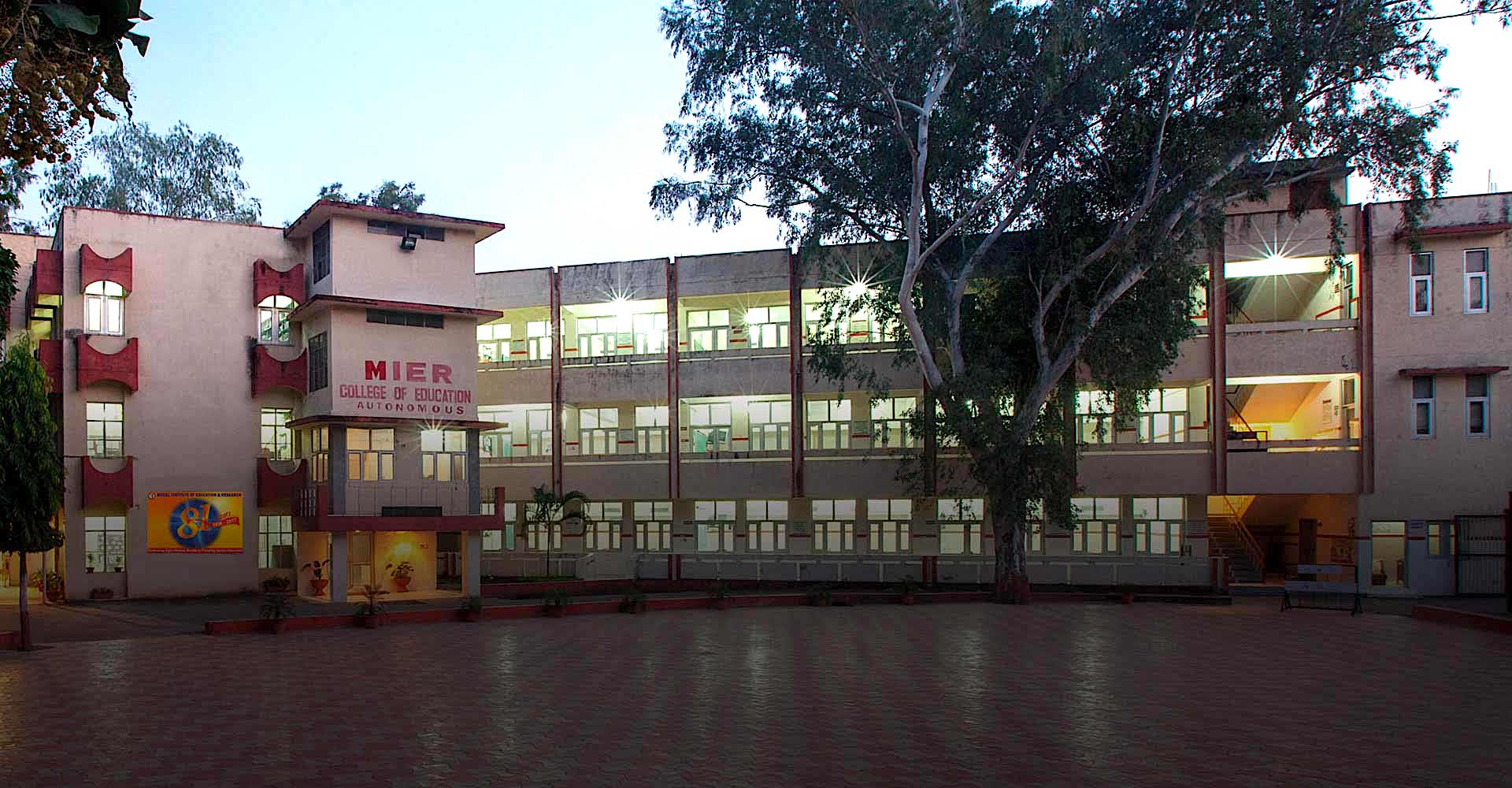Factors Influencing the E-Learning Experience: Evidence from Indian Education Sector During Covid-19
DOI:
https://doi.org/10.52634/mier/2023/v13/i1/2344Keywords:
E-learning, Covid-19, Indian Education, Online LearningAbstract
The COVID-19 pandemic forced the closure of educational institutions worldwide and put academic schedules in danger. Most educational institutions have turned to online learning platforms to maintain academic activities. But the issues surrounding the readiness, design, and effectiveness of e-learning remain unclear. It is still not precisely understood, especially for a developing nation like India, where technological challenges like device appropriateness and bandwidth availability present significant difficulties. Through an online survey of 152 students, this study aims to investigate how students perceive and enjoy online learning. To create an efficient online learning environment, we also investigated the variables affecting students' motivation levels for online classes. According to the students, while internet connectivity challenges in rural locations make it difficult to take advantage of online learning programs, the flexibility and convenience of online classes make them an appealing option. The insights from this article can help build the curriculum for the new normal in agricultural education systems, where switching totally to online mode may not be practical and a hybrid medium is advised.
Downloads
Metrics
Downloads
Published
How to Cite
Issue
Section
License
Copyright (c) 2023 Sonika Jha, Anil Kumar Singh, Janvee Garg

This work is licensed under a Creative Commons Attribution 4.0 International License.
The articles published in the MIER Journal of Educational Studies, Trends and Practics (MJESTP) are distributed under the terms of the Creative Commons Attribution License (CC BY 4.0), which permits unrestricted use, distribution, and reproduction in any medium, provided the original author and source are credited.
- Copyright on any open access article in the MIER Journal of Educational Studies, Trends and Practics (MJESTP) published by Model Institute of Education and Research (MIER) is retained by the author(s).
- Author(s) grant MIER a license to publish the article and identify himself/herself/themselves as the original publisher.
- Authors also grant any third party the right to use the article freely as long as its integrity is maintained and its original authors, citation details and publisher are identified.
- The Creative Commons Attribution License 4.0 formalizes these and other terms and conditions of publishing articles.
References
Aguilera-Hermida, A. P. (2020). College students' use and acceptance of emergency online learning due to COVID-19. International Journal of Educational Research Open, 1, 100011. https://doi.org/10.1016/j.ijedro.2020.100011
Albugami, S., & Ahmed, V. (2015). Success factors for ICT implementation in Saudi secondary schools: From the perspective of ICT directors, head teachers, teachers and students. International Journal of Education and Development Using ICT, 11(1), 36-54.
Alem, F., Plaisent, M., Zuccaro, C., & Bernard, P. (2016). Measuring e-learning readiness concept: scale development and validation using structural equation modeling. International Journal of e-Education, e-Business, e- Management and e-Learning, 6(4), 193. https://doi.org/10.17706/ijeeee.2016.6.4.193-207
Alexopoulos, E. C. (2010). Introduction to multivariate regression analysis. Hippokratia, 14(Suppl 1), 23.
Ali, P., & Younas, A. (2021). Understanding and interpreting regression analysis. Evidence-Based Nursing, 24(4), 116-118. http://dx.doi.org/10.1136/ebnurs-2021-103425
Allawamleh, M., Al-Twait, L. M., & Al-Saht, G. R. (2020). The effect of online learning on communication between instructors and students during Covid-19 pandemic. Asian Education and Development Studies. https://doi.org/10.1108/AEDS-06-2020-0131
Allen, M. W. (2011). Designing successful e-learning: Forget what you know about instructional design and do something interesting (Vol. 2). John Wiley & Sons.
Andrade, C. (2019). The P value and statistical significance: misunderstandings, explanations, challenges, and alternatives. Indian Journal of Psychological Medicine, 41(3), 210-215. http://dx.doi.org/10.4103/IJPSYM.IJPSYM_193_19
Basto, M., & Pereira, J. M. (2012). An SPSS R-menu for ordinal factor analysis. Journal of statistical software, 46, 1-29. http://dx.doi.org/10.18637/jss.v046.i04
Beebe, R., Vonderwell, S., & Boboc, M. (2010). Emerging patterns in transferring assessment practices from f2f to online environments. Electronic Journal of e-learning, 8(1), 1-12.
Bertani, A., Di Paola, G., Russo, E., & Tuzzolino, F. (2018). How to describe bivariate data. Journal of Thoracic Disease, 10(2), 1133. http://dx.doi.org/10.21037/jtd.2018.01.134
Bignoux, S., & Sund, K. J. (2018). Tutoring executives online: What drives perceived quality? Behaviour & Information Technology, 37(7), 703-713. https://doi.org/10.1080/0144929X.2018.1474254
Blaxter, L., Hughes, C., & Tight, M. (2010). How to research. UK: McGraw-Hill Education.
Carlsson, S. A., Henningsson, S., Hrastinski, S., & Keller, C. (2008). Towards a Design Science Research Approach for IS Use and Management: Applications from the Areas of Knowledge Management, E-learning and IS Integration. Proceedings of the 3rd International Conference on Design Science Research in Information Systems and Technology, Atlanta, 111-131.
Choi, D. H., Kim, J., & Kim, S. H. (2007). ERP training with a web-based electronic learning system: The flow theory perspective. International Journal of Human-Computer Studies, 65(3), 223-243. https://doi.org/10.1016/j.ijhcs.2006.10.002
Chung, E., Noor, N. M., & Mathew, V. N. (2020). Are you ready? An assessment of online learning readiness among university students. International Journal of Academic Research in Progressive Education and Development, 9(1), 301-317. http://dx.doi.org/10.6007/IJARPED/v9-i1/7128
Cook, D. A., & Artino Jr, A. R. (2016). Motivation to learn: an overview of contemporary theories. Medical education, 50(10), 997-1014. https://doi.org/10.1111/medu.13074
Currie-Mueller, J. L., & Littlefield, R. S. (2018). Embracing service learning opportunities: Student perceptions of service learning as an aid to effectively learn course material. Journal of the Scholarship of Teaching and Learning, 18(1), 25-42. https://doi.org/10.14434/josotl.v18i1.21356
Dhanalakshmi, R., Anuja M.A., Shrijith, D., & Vijayaraghavan, N. (2021). A study on Covid-19 – Impacting Indian education. Materials Today: Proceedings. https://doi.org/10.1016/j.matpr.2021.02.786
Dhawan S (2020) Online learning: a panacea in the time of COVID-19 crisis. Journal of Educational Technology Systems, 49(1):5–22. https://doi.org/10.1177/0047239520934018
Dutta, A. (2020). Impact of Digital Social Media on Indian Higher Education: Alternative Approaches of Online Learning during COVID-19 Pandemic Crisis. International Journal Of Scientific And Research Publications, 10, 604- 611. http://dx.doi.org/10.29322/IJSRP.10.05.2020.p10169
Esra, M. E. S. E., & Sevilen, C. (2021). Factors influencing EFL students' motivation in online learning: A qualitative case study. Journal of Educational Technology and Online Learning, 4(1), 11-22. http://doi.org/10.31681/jetol.817680
Geerling, W., Thomas, N., & Wooten, J. (2020). Facilitating Student Connections and Study Partners During Periods of Remote and Online Learning. Available at SSRN 3692086.
Gilbert, M. A. (2015). edX E-learning course development. Packt Publishing Ltd.
Hay, A., Hodgkinson, M., Peltier, J. W., & Drago, W. A. (2004). Interaction and virtual learning. Strategic Change, 13(4), 193. https://doi.org/10.1002/jsc.679
Hung, M. L., Chou, C., Chen, C. H., & Own, Z. Y. (2010). Learner readiness for online learning: Scale development and student perceptions. Computers & Education, 55(3), 1080-1090. https://doi.org/10.1016/j.compedu.2010.05.004
IBEF (2019). Education & Training Industry in India. Retrieved May 12, 2020, from https://www.ibef.org/industry/education-sector-india
Johnson, R. D., & Brown, K. G. (2017). E-learning. https://doi.org/10.1002/9781119256151.ch17
Karusala, N., Bhalla, A., & Kumar, N. (2019, June). Privacy, patriarchy, and participation on social media. In Proceedings of the 2019 on Designing Interactive Systems Conference (pp. 511-526). https://doi.org/10.1145/3322276.3322355
Kour, J., & Gupta, A. (2016). An Assessment of the Technology Supported Learning Environments and Attitude Towards Technology in Selected NAAC Accredited Colleges of Education In Jammu. MIER Journal of Educational Studies Trends and Practices, 6(2), 155–177. https://doi.org/10.52634/mier/2016/v6/i2/1436
Kumar, S., Maheshwari, V., Prabhu, J., Prasanna, M., Jayalakshmi, P., Suganya, P., Jothikumar, R. (2020) Social economic impact of COVID-19 Outbreak in India. International Journal of Pervasive Computing and Communication. https://doi.org/10.1108/IJPCC-08-2020-0107
Lee, J. E., & Recker, M. (2021). The effects of instructors' use of online discussions strategies on student participation and performance in university online introductory mathematics courses. Computers & Education, 162, 104084. https://doi.org/10.1016/j.compedu.2020.104084
Lee, J. E., Recker, M., & Yuan, M. (2020). The validity and instructional value of a rubric for evaluating online course quality: An empirical study. Online Learning, 24(1), 245.
Lee, J., Song, H. D., & Hong, A. J. (2019). Exploring factors, and indicators for measuring students' sustainable engagement in e-learning. Sustainability,11(4),985. https://doi.org/10.3390/su11040985
Li, L. Y., & Tsai, C. C. (2017). Accessing online learning material: Quantitative behavior patterns and their effects on motivation and learning performance. Computers & Education, 114, 286-297. https://doi.org/10.1016/j.compedu.2017.07.007
Linnenbrink, E. A., & Pintrich, P. R. (2002). Motivation as an enabler for academic success. School Psychology Review, 31(3), 313-327. https://doi.org/10.1080/02796015.2002.12086158
Mackenzie, N., & Knipe, S. (2006). Research dilemmas: Paradigms, methods and methodology. Issues in Educational Research, 16(2), 193-205.
Malhotra, A., & Malhotra, K.C. (2011). Evaluating customer information breaches as service failures: An event study approach. Journal of Service Research, 14(1), 44-59. https://doi.org/10.1177/1094670510383409
Maneejuk, P., & Yamaka, W. (2021). Significance test for linear regression: how to test without P-values? Journal of Applied Statistics, 48(5), 827- 845. https://doi.org/10.1080/02664763.2020.1748180
Marill, K. A. (2004). Advanced statistics: linear regression, part II: multiple linear regression. Academic Emergency Medicine, 11(1), 94-102.
Michalos, A. C., Thommasen, H. V., Read, R., Anderson, N., & Zumbo, B. D. (2005). Determinants of health and the quality of life in the Bella Coola Valley. Social Indicators Research, 72(1), 1-50. https://doi.org/10.1007/s11205-004-4512-5
Nguyen, T. (2015). The effectiveness of online learning: Beyond no significant difference and future horizons. MERLOT Journal of Online Learning and Teaching, 11(2), 309-319.
Rahiem, M. D. (2021). Remaining motivated despite the limitations: University students' learning propensity during the COVID-19 pandemic. Children And Youth Services Review, 120, 105802. https://doi.org/10.1016/j.childyouth.2020.105802
Rahman, M. H. A., Uddin, M. S., & Dey, A. (2021). Investigating the mediating role of online learning motivation in the COVID-19 pandemic situation in Bangladesh. Journal of Computer Assisted Learning, 37(6), 1513-1527. https://doi.org/10.1111/jcal.12535
Recker, M., & Lee, J. E. (2016). Analyzing learner and instructor interactions within learning management systems: Approaches and examples. Learning, Design, and Technology, 1-23. https://doi.org/10.1007/978-3-319-17727-4_7-1
Reeve, J. (2013). How students create motivationally supportive learning environments for themselves: The concept of agentic engagement. Journal of Educational Psychology, 105(3), 579. https://doi.org/10.1037/a0032690
Reeves, C. R. (Ed.). (1993). Modern heuristic techniques for combinatorial problems. John Wiley & Sons, Inc.
Sale, J. E., Lohfeld, L. H., & Brazil, K. (2002). Revisiting the quantitative-qualitative debate: Implications for mixed-methods research. Quality and Quantity, 36(1), 43-53. https://doi.org/10.1023/A:1014301607592
Sánchez-Cruzado, C., Santiago Campión, R., & Sánchez-Compaña, M. T. (2021). Teacher digital literacy: The indisputable challenge after COVID-19. Sustainability, 13(4), 1858. https://doi.org/10.3390/su13041858
Sangrà, A., Vlachopoulos, D., & Cabrera, N. (2012). Building an inclusive definition of e-learning: An approach to the conceptual framework. International Review of Research in Open and Distributed Learning, 13(2), 145-159. https://doi.org/10.19173/irrodl.v13i2.1161
Sarstedt, M., Ringle, C. M., & Hair, J. F. (2014). PLS-SEM: Looking back and moving forward. Long Range Planning, 47(3), 132-137. https://doi.org/10.1108/EBR-10-2013-0128
Saxena, C., Baber, H., & Kumar, P. (2021). Examining the Moderating Effect of Perceived Benefits of Maintaining Social Distance on E-learning Quality During COVID-19 Pandemic. Journal of Educational Technology Systems, 49(4), 532–554. https://doi.org/10.1177/0047239520977798
Schneider, A., Hommel, G., & Blettner, M. (2010). Linear regression analysis: part 14 of a series on evaluation of scientific publications. Deutsches Ärzteblatt International, 107(44), 776. https://doi.org/10.3238/arztebl.2010.0776
Scott, D., & Usher, R. (2004). Ethics and educational research. Researching Education: Data, Methods and Theory in Educational Enquiry, 127-134.
Setua, C. (2022). Effectiveness of Techno-Pedagogical Skills of Secondary School Teachers on Online Teaching During Covid-19 Pandemic. MIER Journal of Educational Studies Trends and Practices, 171-183. https://doi.org/10.52634/mier/2017/v7/i1/1448
Shahbaz, M., & Khan, R. M. I. (2017). Use of Mobile Immersion in Foreign Language Teaching to Enhance Target Language Vocabulary Learning. MIER Journal of Educational Studies Trends and Practices, 7(1), 66–82. https://doi.org/10.52634/mier/2017/v7/i1/1448
Singh, V., Thurman, A. (2019) How many ways can we define online learning? a systematic literature review of definitions of online learning (1988–2018). American Journal of Distance Education, 33(4), 289–306. https://doi.org/10.1080/08923647.2019.1663082
Singh, H. K., Joshi, A., Malepati, R. N., Najeeb, S., Balakrishna, P., Pannerselvam, N. K., ... & Ganne, P. (2021). A survey of E-learning methods in nursing and medical education during COVID-19 pandemic in India. Nurse Education Today, 99, 104796. https://doi.org/10.1016/j.nedt.2021.104796
Skinner, E. A., Kindermann, T. A., & Furrer, C. J. (2009). A motivational perspective on engagement and disaffection: Conceptualization and assessment of children's behavioral and emotional participation in academic activities in the classroom. Educational and Psychological Measurement, 69(3), 493-525. https://doi.org/10.1177/0013164408323233
Sun, A., & Chen, X. (2016). Online education and its effective practice: A research review. Journal of Information Technology Education, 15. https://doi.org/10.28945/3502
Tadesse, S., & Muluye, W. (2020). The impact of COVID-19 pandemic on education system in developing countries: A review. Open Journal of Social Sciences, 8(10), 159-170. https://doi.org/10.4236/jss.2020.810011
Tkachuk, V., Yechkalo, Y., Semerikov, S., Kislova, M., & Hladyr, Y. (2021). Using mobile ICT for online learning during Covid-19 lockdown. In International Conference on Information and Communication Technologies in Education, Research, and Industrial Applications (pp. 46-67). Springer, Cham. https://doi.org/10.1007/978-3-030-77592-6_3
Tripathy, S., Devarapalli, S. (2020) Emerging trend set by a start-ups on Indian online education system: A case of Byju's. Journal of Public Affairs. https://doi.org/10.1002/pa.2128
UNESCO. (2020). Education: From disruption to recovery UNESCO. Retrieved May 24, 2020, from https://en.unesco.org/covid19/educationresponse
Vallerand, R. J., Pelletier, L. G., Blais, M. R., Brière, N. M., Senécal, C., & Vallières, É. F. (1993). On the assessment of intrinsic, extrinsic, and motivation in education: Evidence on the concurrent and construct validity of the Academic Motivation Scale. Educational and Psychological Measurement, 53(1), 159-172. https://doi.org/10.1177/0013164493053001018
Venkatasen, M., Mathivanan, S. K., Jayagopal, P., Mani, P., Rajendran, S., Subramaniam, U., Ramalingam, A. C., Rajasekaran, V. A., Indirajithu, A., & Sorakaya Somanathan, M. (2020). Forecasting of the SARS-CoV-2 epidemic in India using SIR model, flatten curve and herd immunity. Journal of Ambient Intelligence and Humanized Computing, 1–9. https://doi.org/10.1007/s12652-020-02641-4
Walia, P. (2018). Reforms And Initiatives In Higher Education System. MIER Journal of Educational Studies Trends and Practices, 102-112. https://doi.org/10.52634/mier/2018/v8/i1/1429
Wang, M. T., Fredricks, J. A., Ye, F., Hofkens, T. L., & Linn, J. S. (2016). The math and science engagement scales: Scale development, validation, and psychometric properties. Learning and Instruction, 43, 16-26. https://doi.org/10.1016/j.learninstruc.2016.01.008
Warner, R. M. (2008). Applied statistics: From bivariate through multivariate techniques. Sage.
Williams, R. G., Swanson, D. B., Fryer, J. P., Meyerson, S. L., Bohnen, J. D., Dunnington, G. L., Scully, R. E., Schuller, M. C., & George, B. C. (2019). How many observations are needed to assess a surgical trainee's state of operative competency? Annals of Surgery, 269(2), 377–382. https://doi.org/10.1097/SLA.0000000000002554
Willis, J. W., Jost, M., & Nilakanta, R. (2007). Foundations of qualitative research: Interpretive and critical approaches. Sage. https://doi.org/10.4135/9781452230108
Wooten, J., Geerling, W., & Thomas, N. (2020). Facilitating student connections and study partners during periods of remote and online learning. Journal of Economics Teaching, 5(2), 1-14. http://dx.doi.org/10.2139/ssrn.3692086
Yengin, I., Karahoca, D., Karahoca, A., & Yucel, A. (2010). Roles of teachers in e-learning: How to engage students & how to get free e-learning and the future. Procedia-Social and Behavioral Sciences, 2(2), 5775-5787. https://doi.org/10.1016/j.sbspro.2010.03.942
Yousuf, M. (2020). Impact of online learning during Covid-19–An empirical investigation. International Journal of Scientific Research & Engineering Trends, 6(6), 3368-3371.
Yu, T. (2014). An exploratory factor analysis and reliability analysis of the student online learning readiness (SOLR) instrument (Unpublished Doctoral Dissertation). Purdue University.
Zhang, Y., Fang, Y., Wei, K. K., & Wang, Z. (2012). Promoting the intention of students to continue their participation in e-learning systems: The role of the communication environment. Information Technology & People. https://doi.org/10.1108/09593841211278776





















